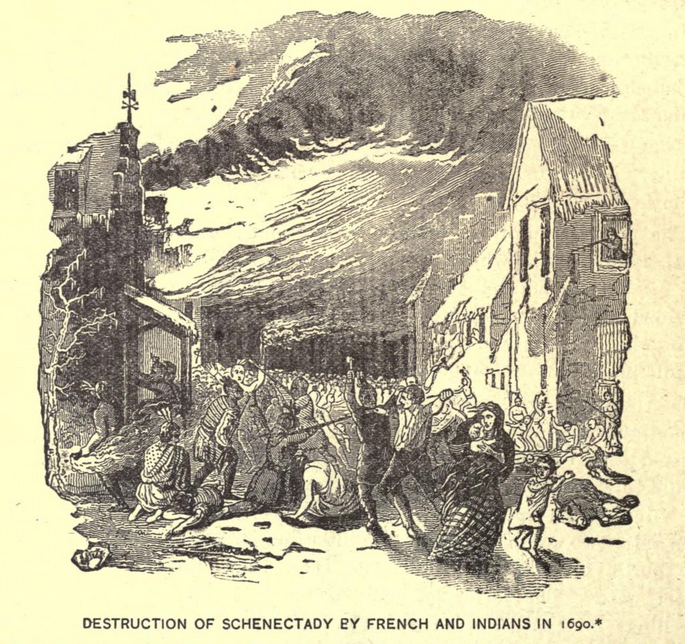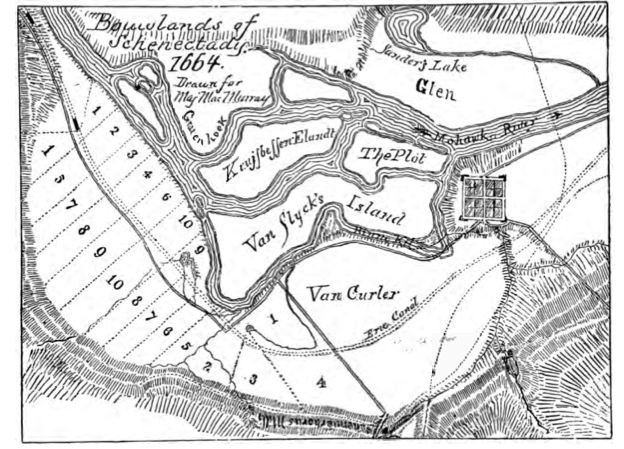
Amidst a war between France and England, tensions between rival bands of Mohawks, and a rebellion within colonial government, the residents of the stockaded community of Schenectady found themselves on the pointy end of international and colonial politics on a cold winter night 323 years ago this week.
In 1661, Arent Van Curler (also given as “Corlaer”) applied to Governor Stuyvesant for permission to settle upon the great flats along the Mohawk River, and it wasn’t long after that that the first settlers arrived. The original idea was that this would be an ideal outpost for the fur trade with the Iroquois, who could easily reach the new community by water in a day’s journey from their “castle” near Fonda; the overland trek to Beverwyck (soon to be Albany) necessitated an additional day’s stay. However, the burghers of Beverwyck were not at all inclined to give up their fur profits to those willing to live in the wilderness, and the government placed restrictions on trading at Schenectady, meaning the settlers would be farmers rather than merchants and traders.

The arrangement of land granted to the settlers at Schenectady was interesting. Each of the original inhabitants was granted a house lot in the village, a farm lot on the river flats or islands, pasture land to the east of the village and a garden lot along the Binnekill (now completely filled in by the community college’s parking lot). Houses and barns were quickly erected, despite the long distance over which building materials had to be carted from Beverwyck. In some cases entire buildings were moved from one community to another. At some point, a stockade was built to encircle the center of the village; other houses were right outside the fence. A blockhouse served as a garrison for soldiers.
After the English took control of the colony in 1664, what was once New Netherlands became a front in a long series of aggressions between the French and the English. France’s renewed efforts to make a success of New France relied on their domination of the fur trade, to the expense of the Mohawk traders and their Dutch/English partners. That domination was expressed in a series of attacks along the borders. On February 9, 1666, a company of French soldiers, thinking they were within striking distance of the Mohawks’ castle, instead brought their snowshoes to a halt about two miles from Schenectady, where forewarned Mohawks ambushed them, killing 11 soldiers and injuring more. Seven wounded soldiers were taken to Albany to be cared for; the heads of four others were displayed to Arent Van Curler, who must have found it unsettling.
But that wasn’t the Schenectady Massacre. It was still to come.
Tomorrow: King William’s War
